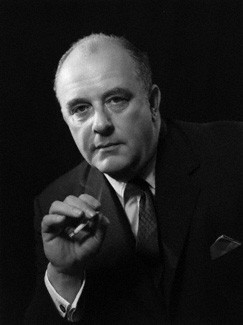Eliezer and Rebecca is the title of two paintings by Nicolas Poussin:
Eliezer and Rebecca is the title of two paintings by Nicolas Poussin:

Nicolas Poussin was a French painter who was a leading painter of the classical French Baroque style, although he spent most of his working life in Rome. Most of his works were on religious and mythological subjects painted for a small group of Italian and French collectors. He returned to Paris for a brief period to serve as First Painter to the King under Louis XIII and Cardinal Richelieu, but soon returned to Rome and resumed his more traditional themes. In his later years he gave growing prominence to the landscape in his paintings. His work is characterized by clarity, logic, and order, and favors line over color. Until the 20th century he remained a major inspiration for such classically-oriented artists as Jacques-Louis David, Jean-Auguste-Dominique Ingres and Paul Cézanne.
Nicolas Poussin (1594-1665) was a French painter.

Et in Arcadia ego is a 1637–38 painting by Classical painter Nicolas Poussin. It depicts a pastoral scene with idealized shepherds from classical antiquity, and a woman, possibly a shepherdess, gathered around an austere tomb that includes the Latin inscription "Et in Arcadia ego", which is translated to "Even in Arcadia, there am I"; "Also in Arcadia am I"; or "I too was in Arcadia". Poussin also painted another version of the subject in 1627 under the same title.

Nathaniel Mayer Victor Rothschild, 3rd Baron Rothschild,, was a British scientist, intelligence officer during World War II, and later a senior executive with Royal Dutch Shell and N M Rothschild & Sons, and an advisor to the Edward Heath and Margaret Thatcher governments of the UK. He was a member of the prominent Rothschild family.
Eliezer was the name of at least three different individuals in the Hebrew Bible.
The Four Seasons, originally referring to the traditional seasons of spring, summer, autumn, and winter, may refer to:

The Galleria Nazionale d'Arte Antica or National Gallery of Ancient Art is an art museum in Rome, Italy. It is the principal national collection of older paintings in Rome – mostly from before 1800; it does not hold any antiquities. It has two sites: the Palazzo Barberini and the Palazzo Corsini.
Venus and Adonis may refer to:
Hendrik Herregouts was a Flemish history and portrait painter and draughtsman with an international career spanning Italy, Germany and his native Flanders.

Pirkei de-Rabbi Eliezer is an aggadic-midrashic work of Torah exegesis and retellings of biblical stories. Traditionally, the work is attributed to the tanna Eliezer ben Hurcanus and his school. Modern research suggests that the text is pseudepigraphic from the Geonic period of the eighth century, written in or near the Land of Israel.
Pesikta refers to a number of collections of rabbinic literature:

"Le Chef-d'œuvre inconnu" is a short story by Honoré de Balzac. It was first published in the newspaper L'Artiste with the title "Maître Frenhofer" in August 1831. It appeared again later in the same year under the title "Catherine Lescault, conte fantastique". It was published in Balzac's Études philosophiques in 1837 and was integrated into La Comédie humaine in 1846. The work is separated into two chapters: "Gillette" and "Catherine Lescault".
The family Delavallée Poussin, also denominated as de La Vallée Poussin, is a family of the French bourgeoisie coming from Normandy in France. Settled in Belgium since the end of the 19th century, most of its members still live there today. Two members of this family were ennobled in the 20th century by the king of Belgium.
Saint Cecilia is the patron saint of musicians and church music in Catholic and Orthodox traditions.

Rebecca appears in the Hebrew Bible as the wife of Isaac and the mother of Jacob and Esau. According to biblical tradition, Rebecca's father was Bethuel the Aramean from Paddan Aram, also called Aram-Naharaim. Rebecca's brother was Laban the Aramean, and she was the granddaughter of Milcah and Nahor, the brother of Abraham. Rebecca and Isaac were one of the four couples that some believe are buried in the Cave of the Patriarchs, the other three being Adam and Eve, Abraham and Sarah, and Jacob and Leah. Most scholars have considered Rebecca's historicity uncertain.

Rebecca and Eliezer at the Well is an oil painting by Italian artist Carlo Maratta, located in the Indianapolis Museum of Art, which is in Indianapolis, Indiana. It shows the story of Abraham's servant Eliezer giving Rebecca jewels to seal her betrothal to Isaac, after she had demonstrated the kindness foreseen by Abraham in offering water to Eliezer's camels.
The rape of the Sabine women was an incident in Roman mythology.

Eliezer and Rebecca or Eliezer Giving Abraham's Presents to Rebecca is an oil-on-canvas paintings by Nicolas Poussin, dating to c.1647–1649, commissioned by silk merchant and banker Jean Pointel and is now in the Louvre. Another similar version is at the Fitzwilliam Museum, whilst another is in a private collection and shows Rebecca quenching Eliezer's thirst rather than Eliezer giving the gifts.

Eliezer and Rebecca is a painting by Nicolas Poussin, dated to 1660–1665 by Denis Mahon and now in the Fitzwilliam Museum in Cambridge.